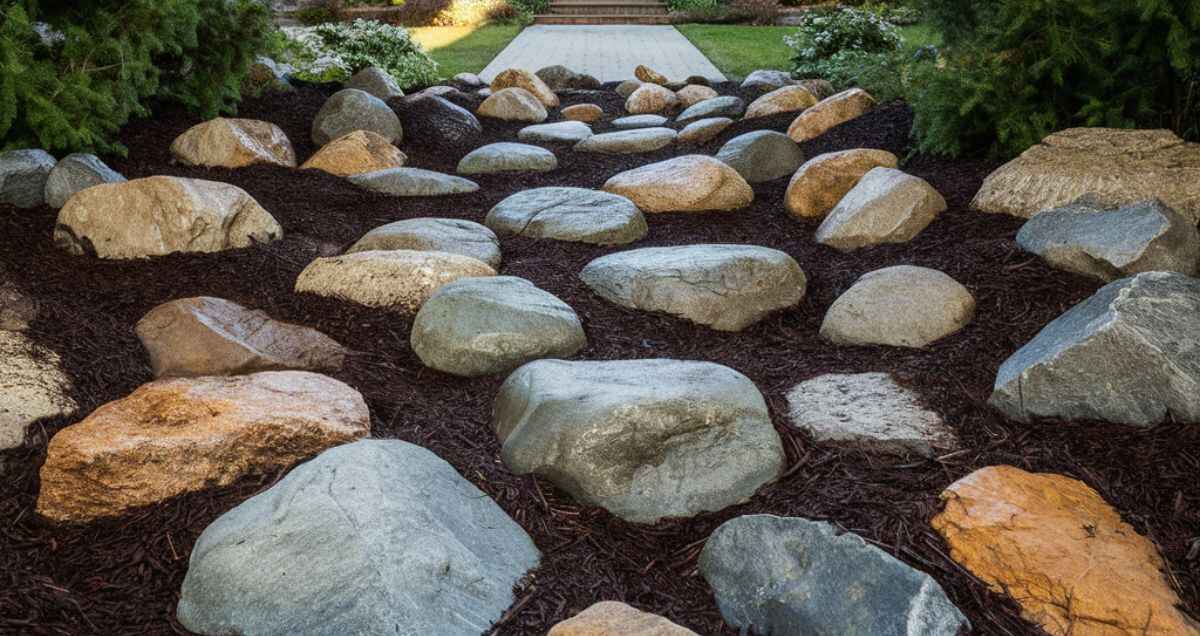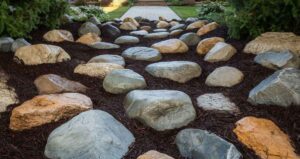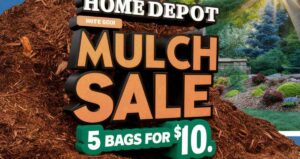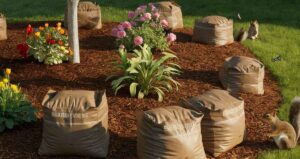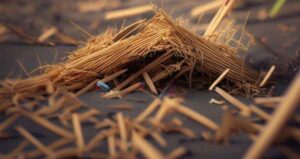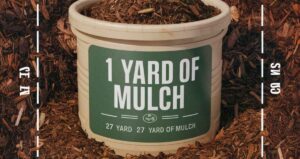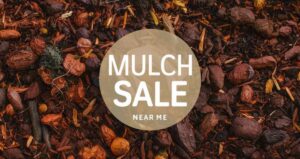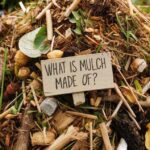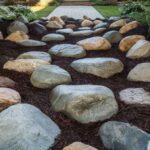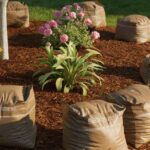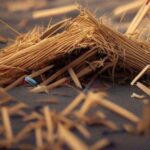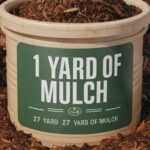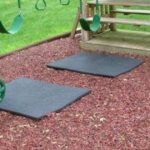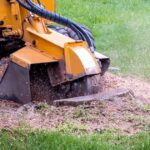Adding mulch to your front yard landscaping ideas with rocks and mulch can create a beautiful and functional space. Mulch helps retain moisture in the soil, which is beneficial for plants. It can also help regulate soil temperature and suppress weeds. This can lead to a healthier landscape that requires less maintenance.
Upgrade your front yard’s curb appeal easily with the simple, low-maintenance combination of rocks and mulch. These budget-friendly materials transform bland spaces into eye-catching landscapes requiring little ongoing effort.
We will discuss, these topics: the beauty of rocks in front yard landscaping, types of rocks for front yard landscaping, mulching magic: enhancing your front yard’s curb appeal, types of mulch for front yard landscaping, combining rocks and mulch: a winning combination, and many more.
The Beauty of Rocks in Front Yard Landscaping
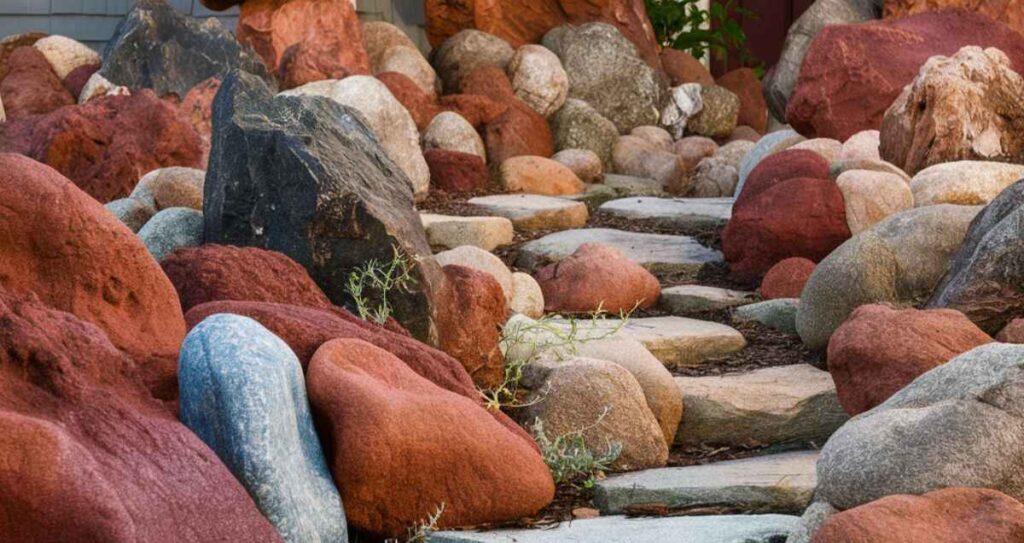
Rocks instantly elevate a front yard’s natural beauty. Their rustic textures and warm earth tones add organic charm. Larger boulders create striking focal points, while river rocks used as mulch introduce gorgeous contrast surrounding plants. The variety allows you to complement your home’s style with a timeless yet rugged aesthetic.
Read This Article: Home Depot Mulch Sale 5 For $10
Beyond their visual appeal, rocks are a practical, low-maintenance landscaping choice. They eliminate the need for replanting or refreshing mulch as a permanent ground cover. Rock borders neatly contain planting areas, while gravel pathways discourage weeds yet remain permeable. And rocks’ longevity means impressive curb appeal with minimal effort beyond occasional relaying.
Types of Rocks for Front Yard Landscaping
- River Rocks: Smooth and rounded, river rocks offer a natural, organic look. They come in various colors and can be used to create stunning pathways, borders, or dry creek beds.
- Boulders: These large, impressive rocks make excellent focal points or accents in your front yard. Place them strategically to create a sense of drama and contrast.
- Gravel: Available in different colors and sizes, gravel is a practical choice for pathways, driveways, or as a decorative ground cover.
Incorporating rocks into your front yard design lets you get creative with patterns, shapes, and textures. For example, you can combine river rocks and boulders to create a captivating rock garden use gravel to outline plant beds, or create borders.
Mulching Magic: Enhancing Your Front Yard’s Curb Appeal
Mulch adds instant polish to any front yard landscape. A fresh application of mulch defines planting beds crisply, creating a tidy, well-tended look. Its uniform color and texture provide a clean backdrop that allows plants and decorative elements to take center stage. Choose mulch hues that complement your home’s exterior for a cohesive design.
Also Read this Article: How Many Bags Of Mulch In A Yard?
Beyond its aesthetic benefits, mulch is a hardworking asset. It insulates soil to protect plants from temperature extremes. As it breaks down gradually, mulch enriches the soil with nutrients. Its water-conserving properties mean less frequent watering. By suppressing weeds, mulch eliminates unsightly growth and cuts back on laborious maintenance. Refreshing mulch annually instantly rejuvenates your home’s curb appeal.
Types of Mulch for Front Yard Landscaping
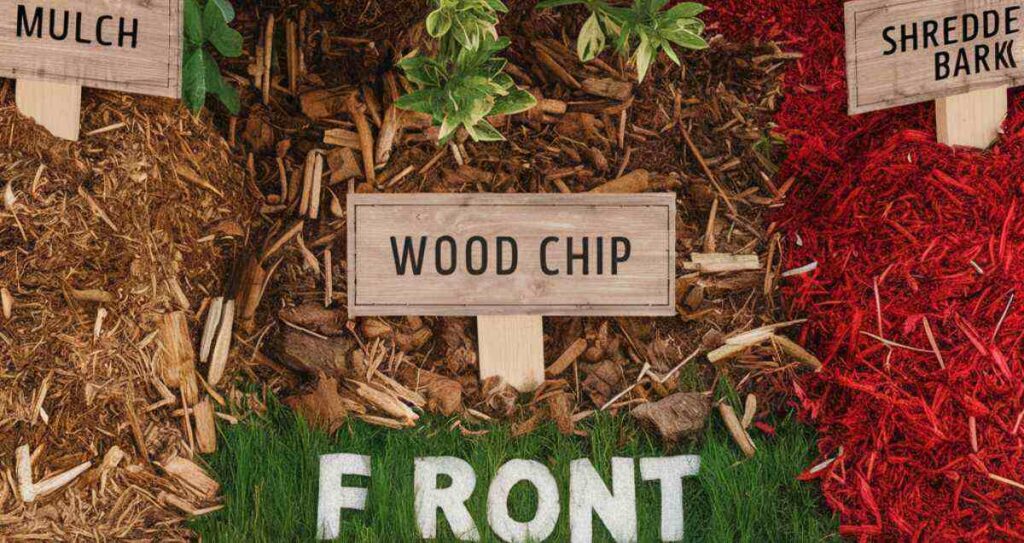
- Bark Mulch: Derived from various tree species, bark mulch provides a natural, earthy look and helps regulate soil temperature.
- Wood Chips: A cost-effective option, wood chips are readily available and offer a rustic charm to your landscape.
- Rubber Mulch: Made from recycled tires, rubber mulch is a durable and long-lasting choice, perfect for high-traffic areas.
When choosing the right mulch for your front yard, consider factors like your climate, moisture retention needs, and the overall aesthetic you wish to achieve. For instance, bark mulch is an excellent choice for warm climates, while wood chips may be preferable in cooler regions.
Combining Rocks and Mulch: A Winning Combination
Pairing rocks and mulch creates a striking yet low-maintenance landscape design. The contrast between the organic textures of mulch and the rugged beauty of rocks adds visual interest and depth. Use larger boulders or decorative gravel as accents surrounded by sweeping beds of mulch. Or line planting areas with rock borders topped with a thick mulch layer.
This versatile duo allows you to craft truly customized curb appeal. Mulch varieties range from natural wood chips to vibrant colored bark. While rocks come in warm earth tones as well as bold statement pieces. By playing with colors, textures, and patterns, you can highlight your home’s architectural style effortlessly. Best of all, this landscaping combination is cost-effective yet requires little ongoing maintenance beyond occasional mulch replenishing.
Principles of Balance, Contrast, and Texture
- Balance: Distribute rocks and mulch in a way that creates a sense of harmony and equilibrium, avoiding an overly cluttered or sparse look.
- Contrast: Play with contrasting textures, colors, and shapes to add visual interest and create focal points.
- Texture: Mix and match different types of rocks and mulch to create a layered, textured look that adds depth and dimension to your landscape.
Here’s a step-by-step guide to creating your own rock and mulch front yard masterpiece:
- Plan Your Design: Sketch out your ideas, considering the layout, flow, and focal points you want to create.
- Prepare the Area: Clear the space, level the ground, and add any necessary landscaping fabric or weed barrier.
- Lay the Foundation: Start by placing your larger rocks or boulders as focal points or accents.
- Add Mulch: Spread your chosen mulch around the rocks, making sure to leave enough space for plants or other elements.
- Incorporate Plants: Complement your rock and mulch design with drought-tolerant plants, adding pops of color and texture.
- Finish with Accents: Add finishing touches like smaller rocks, decorative elements, or lighting to enhance the overall look.
Low Maintenance Landscaping With Rocks And Mulch
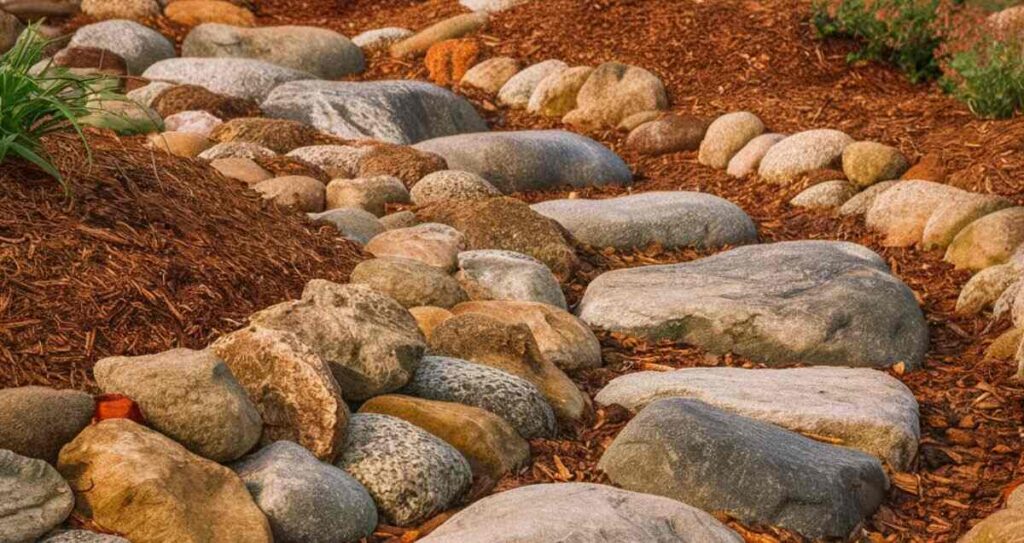
One of the biggest benefits of utilizing rocks and mulch is water conservation. As mulch insulates the soil and prevents moisture evaporation, you’ll need to water planted areas far less frequently. And rock features like gravel or flagstone pathways and patios are entirely water-free zones. This eco-friendly approach reduces the strain on municipal water supplies and your water bill.
For an easy-care design statement, create decorative rock gardens by grouping larger boulders artfully and filling the spaces between with smaller river rocks or decorative gravel. This eliminates grassy areas that need regular mowing. Edge these rock beds with shoveled-in mulch for a tidy, defined look requiring little weeding. With just an occasional rock repositioning, this zero-maintenance display looks crisp year round.
Low Maintenance Benefits
- Weed Suppression: Mulch acts as a natural weed barrier, reducing the need for constant weeding.
- Water Conservation: Rocks and mulch help retain moisture in the soil, reducing the frequency of watering.
- Durability: Both rocks and mulch are long-lasting materials that can withstand harsh weather conditions and heavy foot traffic.
To further enhance the low-maintenance aspect of your rock and mulch landscape, consider incorporating drought-tolerant plants. These plants are well-adapted to dry conditions and require minimal watering, making them the perfect companions for your rock and mulch design.
Drought-Tolerant Plant Options
\When incorporating rocks and mulch into a water-wise landscape design, choose drought-tolerant plants suited to your climate. Once established, these hardy varieties can thrive with little to no supplemental watering. Excellent options include:
- Succulents (hens and chicks, stonecrop, sempervivum)
- Ornamental Grasses (blue fescue, fountain grass, muhly grass)
- Flowering Perennials (coneflowers, blanket flowers, lantana)
- Shrubs (juniper, sumac, yucca)
Group plantings by their water needs, cover beds with 3-4 inches of mulch and utilize drip irrigation lines for maximum water efficiency. With the right drought-busters, your rock and mulch landscape can thrive.
Landscaping Ideas for Different Front Yard Sizes and Styles
Small front yards benefit from simple, defined lines using mulch and rocks. Edge planting beds along the home’s foundation with decorative rock borders. Add a short gravel path and accent with boulder groupings surrounded by river rocks. The scaled-back approach keeps the space open.
Larger yards allow for more creativity. Curve mulched beds to soften lines. Construct dry creek beds using decorative gravel and boulders for striking drainage features. Terrace a sloped yard with rock walls creating level planting pockets. Frame an inviting gravel patio with mulched planting areas. With ample space, the layout possibilities abound.
DIY VS. Professional Landscaping: Which Way To Go?

Deciding between DIY and professional landscaping depends on your project’s scope and your comfort level.
For smaller projects like planting flower beds or edging walkways, DIY can be a fun way to save money and personalize your outdoor space. Researching plants suitable for your climate and learning basic landscaping techniques can be rewarding.
For complex projects or those requiring heavy machinery, professional landscapers offer expertise and efficiency. They can handle tasks like installing patios, drainage systems, or retaining walls.
Frequently Asked Questions
Rocks or mulch for my front yard?
Plants: Mulch helps plants thrive.
Maintenance: Rock is easier to care for long-term.
Cool rock ideas for my front yard?
Consider using river rock, pea gravel, or decorative stones.
How to place rocks in my front yard?
Dig a layer for the rocks to prevent weeds and ensure drainage. Check online guides for specifics.
Can I mix rocks and mulch?
Not recommended for planting areas. Rocks can block air and water.
Eco-friendly mulch alternatives?
You can use shredded bark, cocoa shells, or recycled rubber mulch.
What mulch color should I pick?
Brown is common, but red or black mulch can add contrast!
What’s mulch made of?
Typically shredded wood, but there are other options like bark or recycled materials.
Conclusion
Landscaping with rocks and mulch can create a stunning and easy-to-care-for front yard. Here’s a quick breakdown:
- Mulch adds softness and pops of color while helping plants thrive. It does need to be refreshed every few years.
- Rocks offer a clean, low-maintenance look and come in a variety of styles to match your taste. They’ll last for years with minimal upkeep.
Think about the overall look you want and any plants you have in mind when deciding how to use rocks and mulch together for your front yard design.
